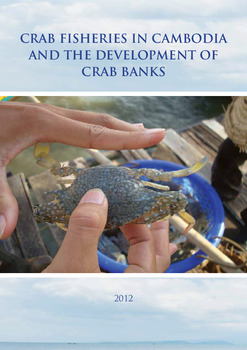Crab fisheries in Cambodia and the development of crab banks

Citation
Chap Sopanha et al. (2012). Crab fisheries in Cambodia and the development of crab banks. WorldFish. Cambodia. 31 p.
The crab (swimming crab; Portunus pelagicus) fishery in coastal Cambodia appears to have declined in recent years due to over-fishing and a growth in the number of fishermen, but remains an important source of income for households along the coast. Several initiatives have started since 2007, with support from NGOs, international organizations and the Fisheries Administration (FiA), to test stock enhancement techniques through the release of crab larvae. The so-called “crab bank” initiative involves keeping harvested gravid crabs alive in cages for a few days until they spawn, instead of immediately selling them for consumption or processing. In Cambodia, this initiative has developed within the framework of Community Fisheries (CFis) and thus implies a communitybased approach. The FiA has promoted the continuation of such initiatives; however, the nature of crab fisheries and the results from crab bank initiatives have not been documented in detail. The scope of this study was to understand the diversity of approaches to crab bank development in Cambodia, as well as their operational status and the challenges faced at different sites.
Permalink
Date Available
Type
Publisher
Countries
Copyright
CC BY 4.0
Research Themes
Topics
Language